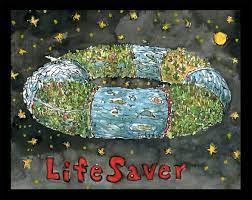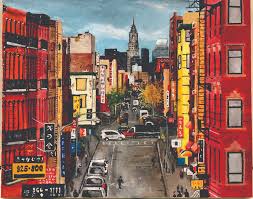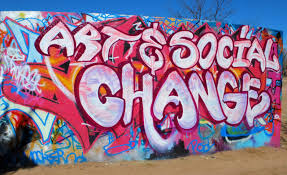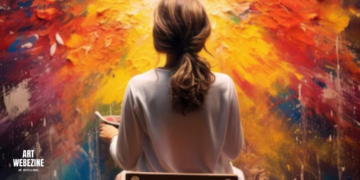The Power of Creativity: How Art Inspires and Drives Social Change
Throughout history, art has been a powerful tool for expressing emotions, telling stories, and inspiring change. From the cave paintings of prehistoric times to contemporary street art, art has always played a vital role in human society, often serving as a mirror of cultural values and social norms. In recent years, there has been a growing recognition of the role of art in promoting social change, as artists and activists have used their creative talents to challenge existing power structures and advocate for a more just and equitable world.
Art can take many forms, from painting and sculpture to music and performance art. Each form has its unique way of engaging with audiences and conveying messages. One of the most effective ways that art promotes social change is by giving a voice to those who are marginalized or oppressed. Art can help to break down barriers of class, race, and gender, and create a sense of empathy and understanding between people from different backgrounds.
One example of art being used to promote social change is the street art movement. Street art often takes the form of murals, graffiti, and installations in public spaces. It is a powerful way to communicate messages to a wide audience, as it is often accessible and visible to anyone who passes by. Street art has been used to raise awareness about a range of issues, from political corruption to environmental degradation.
In some cases, street art has even led to concrete policy changes. For example, in 2013, a group of street artists in Cairo created a series of murals calling for an end to police brutality. The murals sparked a national conversation about police violence, and the government was eventually forced to take action to address the issue.
Music is another form of art that has been used to promote social change. Many musicians use their lyrics to convey messages of social justice and equality. For example, Bob Marley’s music was deeply rooted in the struggle for liberation and equality in Jamaica. His songs, such as “Get Up, Stand Up” and “Redemption Song,” became anthems for the civil rights movement in Jamaica and around the world. Similarly, hip-hop music has been used to give voice to communities that have been marginalized or oppressed. Hip-hop artists such as Tupac Shakur and Public Enemy have used their music to address issues such as police brutality, racism, and poverty.

Performance art is another form of art that has been used to promote social change. Performance art can take many forms, from theatre and dance to spoken word poetry and stand-up comedy. It is a powerful way to engage audiences and provoke thought and reflection. For example, in 2019, the comedian Hannah Gadsby’s stand-up show “Nanette” became a global sensation. The show tackled issues such as homophobia, sexual assault, and mental health, and challenged audiences to think critically about their own biases and prejudices.
Art also has the power to create a sense of community and connection among people. This is particularly important in a world that is increasingly divided and polarized. Art can bring people together and create a sense of shared purpose and identity. For example, in 2018, the artist JR created a massive installation at the US-Mexico border, featuring photographs of individuals from both sides of the border. The installation was a powerful statement against the Trump administration’s policies on immigration and a reminder of the shared humanity that exists on both sides of the border.
Despite its power to inspire and drive social change, art is often undervalued and underfunded. In many countries, arts programs are the first to be cut when budgets are tight. This is a mistake. Art is not a luxury, but a necessity. It is a vital part of our cultural heritage and an essential tool for promoting social change. Art education in schools is particularly important, as it provides young people with the skills and tools they need to express themselves creatively and engage with the world around them. Art education can also help to foster empathy and understanding among students, encouraging them to think critically about social issues and take action to promote positive change.
There are many organizations and initiatives around the world that are using art to promote social change. One such organization is Artivism, a global network of artists and activists who use their creative talents to challenge social injustices and advocate for a more equitable world. Artivism has organized a range of projects, from street art campaigns to community workshops, and has helped to inspire a new generation of artists and activists who are using their talents to make a difference.
Another organization that is using art to promote social change is Art for Amnesty, an initiative of Amnesty International that works to raise awareness of human rights abuses through art. Art for Amnesty has organized exhibitions, concerts, and other events around the world, featuring the work of artists who are using their talents to support the fight for human rights.
Conclusion
Art plays a crucial role in promoting social change. It has the power to give voice to marginalized communities, challenge existing power structures, and inspire empathy and understanding among people from different backgrounds. Art can take many forms, from street art to music to performance art, and each form has its unique way of engaging with audiences and conveying messages. Despite its power, art is often undervalued and underfunded, and there is a need for greater recognition of its importance in promoting social change. By supporting artists and arts education, we can help to build a more just and equitable world, one that is inspired and driven by the power of creativity.
As individuals, we can also play a role in promoting social change through art. We can support local artists and arts organizations, attend cultural events that promote social justice and equality, and use our own creative talents to express our views and inspire others. Social media platforms also offer a powerful tool for sharing and promoting art that challenges social norms and promotes social change.
It is important to recognize that art alone cannot solve all of society’s problems. Real change also requires political action, grassroots organizing, and structural reform. However, art can be a powerful complement to these efforts, helping to raise awareness, inspire action, and create a sense of community and connection among people. As the world continues to face complex and pressing social challenges, art can be a source of hope and inspiration, reminding us of the power of creativity to drive positive change.

The role of art in promoting social change is vital. It has the power to give voice to the marginalized, challenge power structures, and inspire empathy and understanding. Art is not a luxury but a necessity, and its importance should be recognized and supported by society as a whole. As individuals, we can support artists and arts organizations, use our own creative talents, and share and promote art that challenges social norms and promotes social change. By doing so, we can help to create a more just and equitable world, one that is driven by the power of creativity and the pursuit of social justice.






